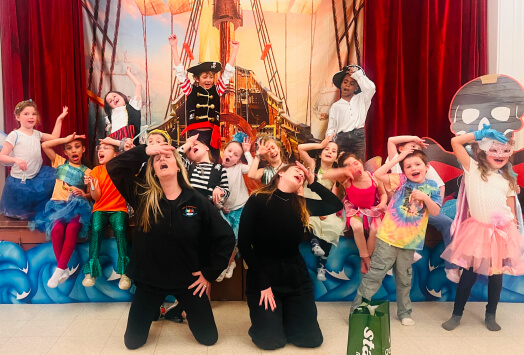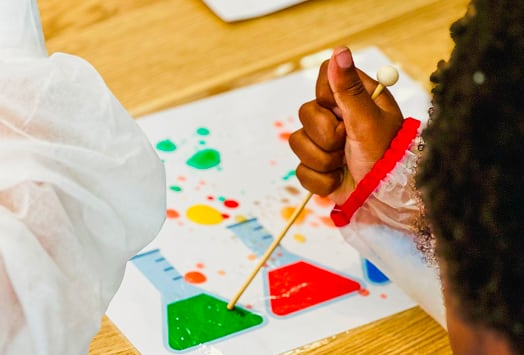Whether you are just starting an after school program or you have been running one for a long time, keeping your curriculum, lesson plans, and activities fresh is important. Research shows that high quality after school programs can lead to increased attendance, better behavior, and improved schoolwork from students. Therefore, by running strong after school programming you are directly impacting all of your students in and out of the classroom.
To help you come up with after school program curriculum ideas, the team at Sawyer has outlined some of our providers’ favorite activities to give you inspiration and get you started.
After school program curriculum ideas
Even though you are running an after school program that likely won’t include grades or assessments, creating a strong curriculum is paramount to success. Using a curriculum ensures that you hit all of the important points in your lessons so that your students understand the activities and advance their skills.
When you are thinking about after school program curriculum ideas, you can decide if you are going to provide a mix of subjects or if you will focus on just one. Enrichment after school programs, where children get the opportunity to explore art, theater, STEM, sports, and more, are great ways to keep your curriculum interesting and varied. Plus, it is an excellent way to increase program enrollment numbers since children with many different interests can join and have fun.
However, if you choose to create a subject-based after school program, you have more of an opportunity to dive deeper and teach students more advanced skills. For example, if you are teaching kids to code in your after school program, you can develop a curriculum that walks them through different skills and languages that they need to grow as developers.
If you are looking for guidance on how to write a curriculum, we’ve created a whole guide to help you.

After school program activities
When we asked Sawyer provider The Paintbrush why after school programming is important, Melanie, the founder, said, “Kids may be lucky to get the ‘special classes’ in school. But even if they do, it’s always a graded class. After school programs allow kids to do the things they want to do in a relaxed non-school environment.”
We couldn’t agree more! One of the best benefits of after school programming is that children can really explore new subjects and passions without worrying about grades. This can lead to more risk taking and experimentation as children become less concerned about making a mistake or getting something “wrong.” As you begin to plan your after school program curriculum, we recommend focusing on the activities that will make up your lesson plans. Here are some of our Sawyer providers’ favorite after school activities for different topics to give you inspiration.
Science
Children love science activities because they are an exciting way to learn and experience the world around them in a new way. Especially in an after school program, focus on the fun and let the knowledge come with it. We’ve outlined some of our favorite science lessons, experiments, and projects for kids and given some highlights below.
- Egg drop. Challenge students to create a container that will protect an egg when it falls. Then test the container’s efficiency by dropping it from different heights.
- Fossil search. Explore the grounds to find different types of rocks and “fossils”, then bring them back and catalog them.
- Discover electricity. Work with your students to learn about, and then connect your own, circuits. Try through a potato, different materials, and more!
Art
After school programming and art go hand-in-hand. After school art programs can provide children time to dive deeper into the world of art. If you are looking for guidance when teaching art to children, review our full guide and some of our favorite art after school activities below.
- Recreate famous artists’ work. This is a great way to combine art history with interactive activities for the students. Show students a variety of famous pieces, like The Starry Night, American Gothic, The Persistence of Memory, Impression (Sunrise), and more. Then, let them put their own spin on these famous works of art. For more fun try having them recreate pieces in a different medium with varied materials!
- Create art from nature. Let the students explore outside to find materials that they can use for their art. Pine needles, sand, pebbles, and leaves all make great additions to future masterpieces.
- Have fun with it. Yes, this is an activity! Finger paint with teenage students, splatter paint with little ones, draw with non-dominant hands, play loud music, and do anything else that you can to make these art activities as fun as possible.
Cooking
When creating an after school program curriculum, we recommend adding activities children may not typically see in school, like cooking. Research shows that cooking programs positively influence food preferences, attitudes, and behaviors for children who participate. Cooking activities can also help improve fine motor skills as well as reinforce math and science knowledge. If you are looking for guidance on teaching kids to cook, use our full guide as well as these activities.
- Themed classes. Parents will love it if their child comes back from their after school program with experience making appetizers, desserts, breakfast, and more. You could even pick a geographic region and cook food specific to that location, letting students learn about a different culture while they cook. Go through a full recipe with your class and then send them home with all the details so they can impress their families.
- Draw inspiration from stories. Start by reading a story or watching a movie about a culture or group of people, then recreate a dish from that piece of content. For example, watch Ratatouille then make ratatouille, Encanto and then make arepas, or If You Give a Mouse a Cookie and make cookies!
- Science and cooking. Gather your students for an activity that combines science with cooking. Explore how yeast makes dough rise, how lemon gets grease off of pans, and the difference between baking powder and baking soda.

We hope that this guide has given you after school program curriculum ideas and activity examples to help you move forward with planning. If you are looking for guidance on managing and running your children’s education and activity business, the team at Sawyer is here to help.
With our suite of tools, like custom forms to record allergies and t-shirt sizes, flexible payment options like gift cards and installment plans, and seamless scheduling and registration on any device, Sawyer saves business owners 28 hours per month. If you are ready to spend less time on admin and more time doing more of what you love, see how Sawyer can help with a free trial or demo.





















.png)












.avif)
.avif)
.avif)
.avif)




